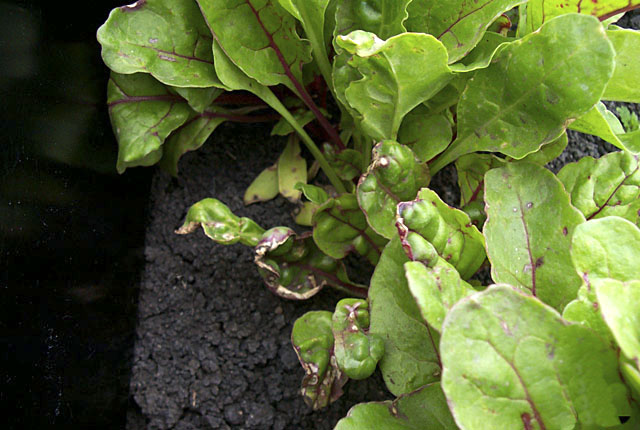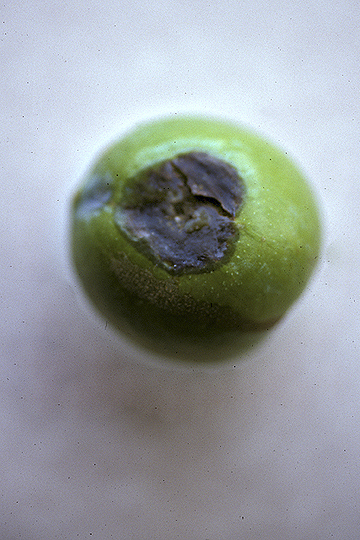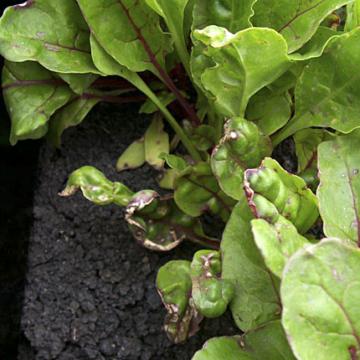DISEASE: Bacterial leaf spot of beet
HOST: Beet
Beet leaves with spots and marginal necrosis.

Bacterial leaf spot of beet | Beet
DISEASE: Bacterial leaf spot of beet
HOST: Beet (Beta vulgaris subsp. vulgaris)
PATHOGEN: Pseudomonas syringae pv. aptata
PATHOGEN SYNONYM: Pseudomonas aptata
SOURCE: P. Brown
DISEASE: Bacterial spot
HOST: Plum
Shot-hole phase of disease.

Bacterial spot | Plum
DISEASE: Bacterial spot
HOST: Plum (Prunus domestica)
PATHOGEN: Xanthomonas arboricola pv. pruni
PATHOGEN SYNONYM: Xanthomonas campestris pv. pruni
SOURCE: T. Burr
DISEASE: Bacterial spot
HOST: Plum
Dark, sunken area on blossom end of fruit.

Bacterial spot | Plum
DISEASE: Bacterial spot
HOST: Plum (Prunus domestica)
PATHOGEN: Xanthomonas arboricola pv. pruni
PATHOGEN SYNONYM: Xanthomonas campestris pv. pruni
SOURCE: S. Thomson
DISEASE: Bacterial spot
HOST: Plum
Dark brown necrotic lesions along main leaf vein. Lesions may drop off, leaving shot-hole effect.

Bacterial spot | Plum
DISEASE: Bacterial spot
HOST: Plum (Prunus domestica)
PATHOGEN: Xanthomonas arboricola pv. pruni
PATHOGEN SYNONYM: Xanthomonas campestris pv. pruni
SOURCE: S. Thomson
DISEASE: Olive knot
HOST: Olive
Multiple infections of young stems. The bacterium invades vascular tissues during certain times of the year and may be isolated from branches that appear healthy.

Olive knot | Olive
DISEASE: Olive knot
HOST: Olive (Olea europaea)
PATHOGEN: Pseudomonas savastanoi pv. savastanoi
SOURCE: M. Schroth
DISEASE: Olive knot
HOST: Olive
Tree with knots/galls on branches along with twig dieback, which is associated with knots. Fusarium and Diplodia spp. infect through knots and are thought to be main reason for dieback.

Olive knot | Olive
DISEASE: Olive knot
HOST: Olive (Olea europaea)
PATHOGEN: Pseudomonas savastanoi pv. savastanoi
SOURCE: M. Schroth
DISEASE: Olive knot
HOST: Olive
Multiple infections on olive branch. Knots at this stage begin to die from the outside in and are infected by several fungi.

Olive knot | Olive
DISEASE: Olive knot
HOST: Olive (Olea europaea)
PATHOGEN: Pseudomonas savastanoi pv. savastanoi
SOURCE: M. Schroth










